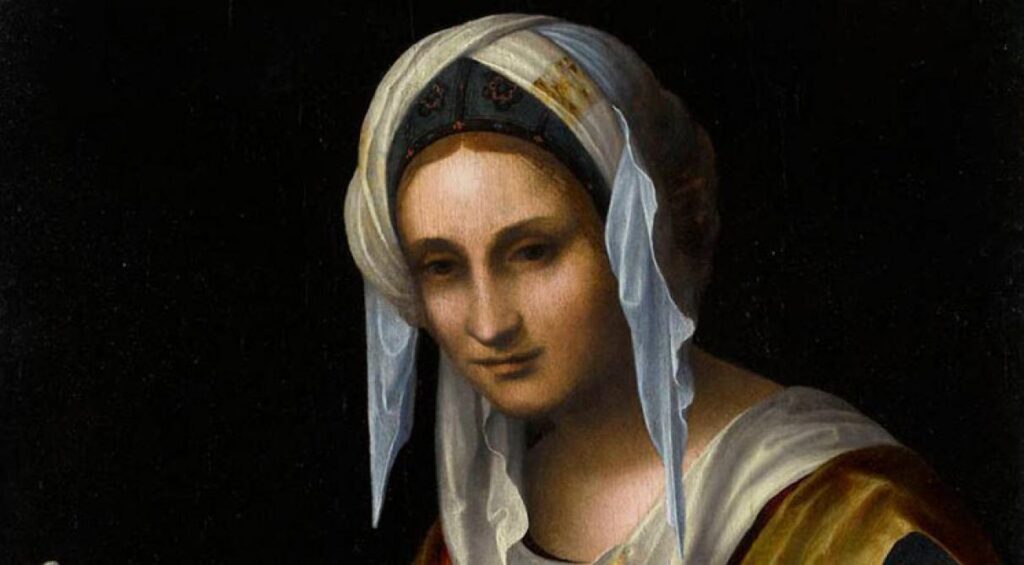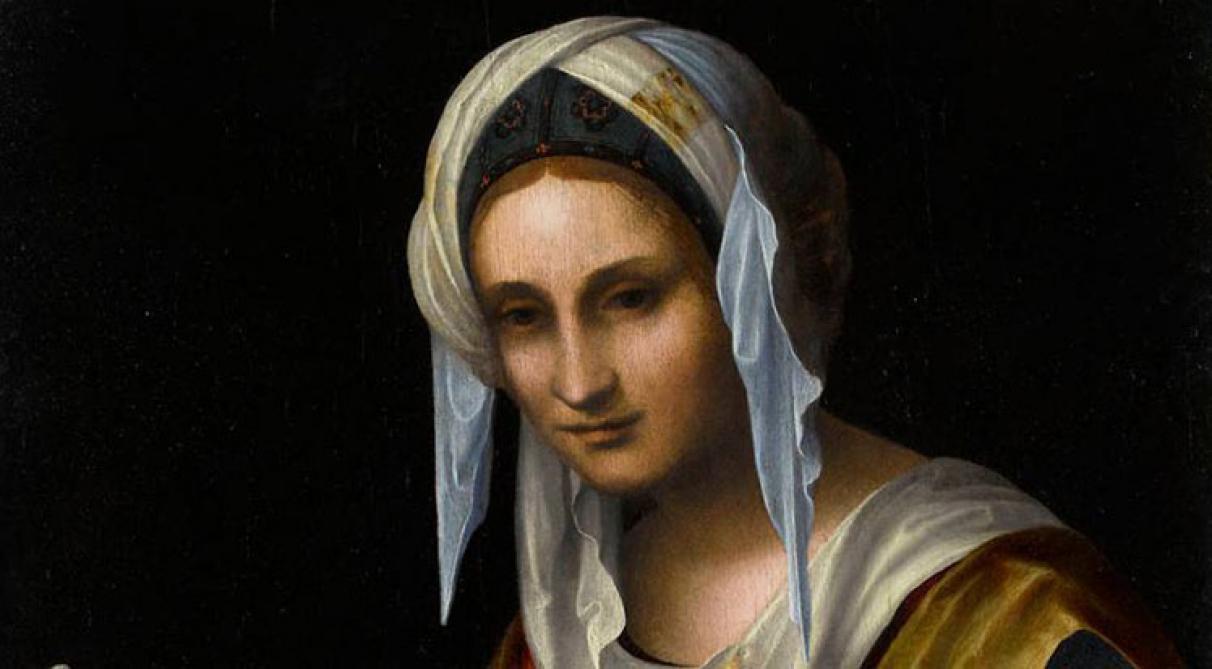
Sainte Véronique: Unveiling the Life, Legend, and Legacy of Saint Veronica
Saint Veronica, or Sainte Véronique as she is known in French, is a figure shrouded in both historical obscurity and profound religious significance. Her story, primarily derived from pious tradition rather than canonical scripture, centers around an act of compassion and its enduring symbol: the Veil of Veronica. This article delves into the multifaceted aspects of Sainte Véronique, exploring her origins, the legend surrounding her, her veneration in various Christian traditions, and her continuing relevance in art and popular culture.
The Enigmatic Origins of Sainte Véronique
Unlike many saints whose lives are meticulously documented, the historical basis for Sainte Véronique is relatively sparse. There are no mentions of her in the canonical Gospels. Her story emerges primarily from apocryphal texts and later medieval traditions. This makes separating historical fact from pious legend a considerable challenge. The name “Veronica” itself is subject to interpretation. Some scholars suggest it is derived from the Latin phrase “vera icon,” meaning “true image,” alluding to the image of Christ’s face imprinted on her veil. This etymological interpretation further blurs the line between the person and the relic.
Despite the lack of definitive historical proof, the legend of Sainte Véronique has resonated deeply with Christians for centuries. The absence of concrete evidence does not necessarily negate the spiritual significance attributed to her story. Rather, it highlights the power of faith and the enduring appeal of narratives that embody compassion and devotion.
The Legend of the Veil of Veronica
The most widely known account of Sainte Véronique involves her encounter with Jesus Christ on the Via Dolorosa, the path to his crucifixion. According to tradition, as Jesus struggled under the weight of the cross, Véronique, moved by compassion, offered him her veil to wipe the sweat and blood from his face. Miraculously, the image of Christ’s face was imprinted upon the cloth. This veil, known as the Veil of Veronica, became a cherished relic, revered for its purported authenticity and miraculous properties. It is said to have been housed in St. Peter’s Basilica in Rome for centuries, though its current whereabouts are a matter of debate among historians and art experts.
Different versions of the legend exist. Some accounts portray Véronique as a woman healed by Jesus, who then uses the veil to soothe him during his suffering. Others connect her to the woman with an issue of blood, mentioned in the Gospels, who was healed by touching the hem of Jesus’ garment. Regardless of the specific details, the core narrative remains consistent: Sainte Véronique performs an act of kindness towards Jesus, and in return, receives a miraculous image as a testament to his divinity.
Veneration and Feast Day
Sainte Véronique is venerated as a saint in the Catholic Church, as well as in some Anglican and Lutheran traditions. Her feast day is celebrated on July 12th. While her feast day is not a major liturgical event, it provides an opportunity for reflection on her virtues of compassion, empathy, and courage. Churches dedicated to Sainte Véronique can be found throughout the world, and her image is frequently depicted in religious art. Her story serves as an inspiration for those who seek to alleviate suffering and show kindness to others, even in the face of adversity. The Catholic church, while acknowledging her existence, does not make it a matter of doctrine.
Sainte Véronique in Art and Popular Culture
The image of Sainte Véronique holding the Veil of Veronica has been a recurring theme in Western art for centuries. She is often depicted with a serene expression, gazing upon the image of Christ’s face imprinted on the cloth. Artists such as Domenico Fetti, Hans Memling, and El Greco have all created notable depictions of Sainte Véronique. These artworks not only serve as visual representations of the legend but also explore themes of faith, suffering, and redemption. The Veil of Veronica itself is often depicted with meticulous detail, emphasizing the miraculous nature of the image.
Beyond traditional religious art, Sainte Véronique has also appeared in popular culture. Her story has been adapted into plays, films, and novels. These adaptations often explore the psychological and emotional dimensions of her encounter with Jesus, highlighting the impact of her act of compassion. The image of the Veil of Veronica has also been used in various contexts, from religious iconography to contemporary art installations. The enduring presence of Sainte Véronique in art and popular culture demonstrates the continued relevance of her story and its capacity to inspire and provoke reflection. The name Sainte Véronique is often associated with acts of mercy and kindness.
Theological Significance and Interpretation
The story of Sainte Véronique raises important theological questions about the nature of suffering, compassion, and the representation of the divine. Her act of offering comfort to Jesus on the Via Dolorosa embodies the Christian virtue of charity. It demonstrates the importance of empathy and the willingness to alleviate the suffering of others, even at personal risk. The miraculous image on the Veil of Veronica is interpreted by some as a symbol of Christ’s divine presence and the power of faith. It suggests that even in the midst of suffering and death, God’s image can be revealed.
However, the story of Sainte Véronique also raises questions about the nature of religious relics and the role of visual representations in religious practice. The authenticity of the Veil of Veronica has been debated for centuries, and there is no definitive proof that it is the actual cloth used by Véronique. Nevertheless, the relic continues to be venerated by many Christians as a symbol of faith and devotion. This highlights the complex relationship between faith, history, and material objects in religious traditions. The essence of Sainte Véronique lies in her compassion, not necessarily in the relic itself.
Modern Interpretations and Relevance
In contemporary society, the story of Sainte Véronique continues to resonate with people from diverse backgrounds. Her act of compassion serves as a reminder of the importance of empathy and the need to alleviate suffering in the world. In a world often characterized by indifference and division, her example offers a powerful message of hope and solidarity. The image of the Veil of Veronica can also be interpreted as a symbol of the human search for meaning and transcendence. It suggests that even in the face of uncertainty and doubt, the human spirit can find solace and inspiration in the contemplation of the divine. The legacy of Sainte Véronique is one of selfless service and unwavering faith.
Moreover, the story of Sainte Véronique encourages us to question the nature of truth and the role of evidence in shaping our beliefs. While there is no definitive historical proof of her existence, her story has been passed down through generations and has inspired countless individuals. This highlights the power of narrative and the importance of stories in shaping our understanding of the world. Ultimately, the significance of Sainte Véronique lies not in the historical accuracy of her story, but in the values and ideals that she embodies. Her name, Sainte Véronique, echoes through history as a beacon of compassion.
Conclusion: The Enduring Legacy of Sainte Véronique
Sainte Véronique, while a figure of debated historical certainty, remains a powerful symbol of compassion, faith, and the enduring human quest for connection with the divine. Her legend, centered on the act of offering comfort to Jesus on the Via Dolorosa and the miraculous image imprinted on her veil, has resonated with Christians for centuries. Whether viewed as a historical figure or a symbolic representation of human kindness, Sainte Véronique’s story continues to inspire acts of charity, empathy, and devotion. Her presence in art, literature, and popular culture ensures that her legacy will endure for generations to come. [See also: The Stations of the Cross] [See also: Relics of the Passion] The tale of Sainte Véronique is a testament to the power of a single act of kindness.
The story of Sainte Véronique may be apocryphal, but the message of Sainte Véronique remains timeless. The image of Sainte Véronique continues to inspire acts of kindness around the world. The name Sainte Véronique is synonymous with compassion and empathy. Let the story of Sainte Véronique remind us of the importance of helping others. The legend of Sainte Véronique is a powerful reminder of the importance of compassion. The story of Sainte Véronique resonates with people of all faiths. The example of Sainte Véronique encourages us to be kind to one another. The Veil of Veronica serves as a symbol of hope and redemption.

